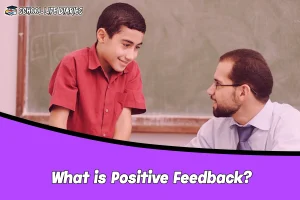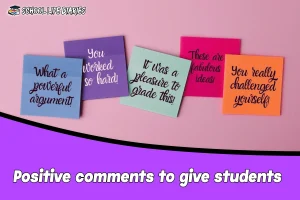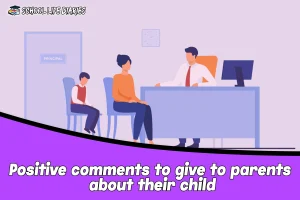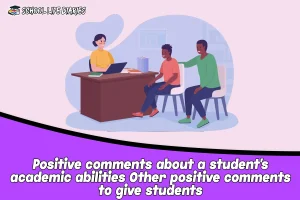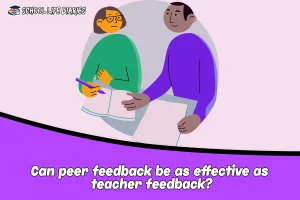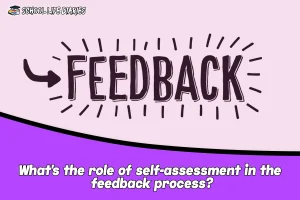Feedback plays a crucial role in the growth and development of students. It serves as a powerful tool for teachers to encourage and motivate their students. Effective feedback not only helps students understand their strengths and weaknesses but also guides them toward improvement.
Through this article, we will explore various strategies that teachers can employ to deliver impactful positive feedback that encourages and motivates students to reach their full potential.
What is Positive Feedback?
Positive feedback plays a crucial role in fostering student motivation and encouraging their continued efforts and achievements. It is important for teachers to provide positive feedback to students as it helps them develop confidence in their abilities and enhances their self-esteem. When students receive positive feedback, they feel acknowledged and recognized for their hard work, which motivates them to continue putting in effort and strive for further success.
The impact of positive feedback on students’ academic performance cannot be overlooked. Research has shown that when students receive consistent positive feedback, they are more likely to engage in the learning process actively. This is because positive feedback reinforces the idea that their efforts are valued and appreciated by the teacher, creating a safe environment where they feel comfortable taking intellectual risks. Students who receive regular positive feedback also tend to have higher levels of intrinsic motivation, as they develop a genuine interest in learning rather than relying solely on external rewards or grades.
Why Positive Feedback is important for a student?
Essential for a student’s growth and development, constructive reinforcement fosters a conducive learning environment by acknowledging progress and instilling confidence. Positive feedback plays a pivotal role in motivating students to continue their efforts and strive for excellence. When students receive recognition for their achievements, it boosts their self-esteem and encourages them to take on more challenging tasks.
This creates a positive cycle of growth where students are motivated to learn, explore new ideas, and reach their full potential. The importance of positive feedback lies in its impact on student engagement and motivation. Positive feedback is essential for student growth as it acknowledges the progress made by individuals while fostering confidence in their abilities. Its importance lies in its impact on motivation levels by boosting self-esteem and encouraging further efforts towards success.
How to Give Positive Feedback to Students?
Positive feedback plays a pivotal role in motivating students and encouraging their progress. This type of feedback not only acknowledges students’ hard work but also helps them develop confidence in their abilities. When teachers provide constructive criticism along with praise, they help students understand areas for improvement while still highlighting their strengths.
Creating a positive classroom culture is essential for student motivation and engagement. Effective positive feedback serves as a catalyst for this culture by promoting an atmosphere of encouragement, respect, and collaboration among classmates. When teachers consistently give recognition and appreciation to individual achievements, it creates an environment where all students feel valued and motivated to excel.
Is written feedback better than verbal feedback?
When teachers provide written feedback, it allows them to carefully choose their words and provide clear instructions or suggestions for improvement. This level of clarity is often lacking in verbal feedback which can be misinterpreted or forgotten by students.
Written feedback offers unique advantages in this regard as it allows students to absorb and process the information at their own pace. They can take the time to fully understand the comments provided, consider how they can apply them to future work, and ultimately feel empowered to take ownership of their learning journey.
Written feedback offers distinct advantages over verbal feedback when it comes to clarity, permanence, and fostering student reflection. Its impact on student motivation is undeniable as it empowers learners with clear instructions and allows them the opportunity to reflect on their progress at their own pace.
Positive comments to give students:
This discussion will focus on positive comments that can be given to students in various aspects.
Write at least 10 comments
- “Your hard work is paying off; keep it up!”
- “You have a brilliant mind; your ideas are always so insightful.”
- “You consistently give your best effort, and it shows.”
- “You’re a problem-solving wizard! Keep those creative solutions coming.”
- “You’re an inspiration to your classmates.”
- “I can see how much you’ve grown and improved. Great job!”
- “Your positive attitude brightens up our classroom every day.”
- “You’re a natural leader; your classmates look up to you.”
- “Your dedication to learning is truly admirable.”
- “I’m impressed by your commitment to excellence.”
Positive comments to give to parents about their child
Positive comments about a student’s personality can play a crucial role in motivating and encouraging students to excel academically. In this discussion, we will explore at least 10 comments that can be given to parents, highlighting their child’s strengths and achievements in an objective and impersonal manner.
Write at least 10 comments
Here are 10 comments teachers can use to encourage and motivate their students:
- “Your child’s curiosity and eagerness to learn are truly remarkable. They have a natural love for exploring the world around them.”
- “I’ve noticed your child’s exceptional kindness and empathy towards their peers. They are always there to lend a helping hand.”
- “Your child’s creativity shines through in their artwork and imaginative play. They have a wonderful ability to express themselves.”
- “Your child’s dedication to their studies is commendable. They consistently put in the effort to do their best.”
- “I appreciate your child’s respectful behavior in the classroom. They are a great role model for their classmates.”
- “Your child’s enthusiasm for [specific subject or activity] is infectious. They bring a sense of joy and excitement to our lessons.”
- “I’ve observed your child’s strong sense of responsibility. They take their tasks seriously and complete them with diligence.”
- “Your child’s problem-solving skills are impressive. They approach challenges with a positive attitude and find creative solutions.”
- “Your child’s ability to communicate and express their thoughts is excellent. They are a confident and effective communicator.”
- “Your child’s perseverance is truly inspiring. They don’t give up easily and continue to work hard to achieve their goals.”
These comments provide parents with specific and positive feedback about their child’s qualities and achievements, fostering a sense of pride and encouragement.
Positive comments about a student’s academic abilities
This paragraph introduces a discussion of positive comments about a student’s academic abilities. The writing style used will be objective and impersonal, without the use of personal pronouns. The aim is to provide feedback that highlights the student’s strengths and capabilities in academics.
Write at least 10 comments
Certainly, here are 10 positive comments about a student’s academic abilities:
- “Your dedication to your studies is evident in your consistently outstanding performance.”
- “You have a natural aptitude for grasping complex concepts and making them seem easy.”
- “Your analytical skills are impressive; you excel in breaking down problems and finding solutions.”
- “I’m continually amazed by your strong work ethic and your ability to meet academic challenges head-on.”
- “Your inquisitive nature fuels your passion for learning, making you a standout student.”
- “Your attention to detail sets you apart, ensuring accuracy in all your assignments.”
- “You have a gift for articulating your thoughts clearly and persuasively in your written work.”
- “Your ability to absorb and retain information is truly remarkable.”
- “Your enthusiasm for exploring new topics and your thirst for knowledge are truly inspiring.”
- “Your academic achievements are a testament to your commitment to excellence, and I have no doubt that your future holds great success.”
These comments highlight a student’s strengths and accomplishments, providing positive reinforcement for their academic abilities.
Other positive comments to give students
This discussion focuses on other positive comments that teachers can give to students in order to encourage and motivate them. By providing specific and genuine praise, teachers can create a positive learning environment where students feel valued and inspired to reach their full academic potential.
Write at least 10 comments
Here are 10 more positive comments to encourage and uplift students in various aspects of their lives:
- “Your resilience in the face of challenges is admirable. Keep pushing forward; you’ve got this!”
- “You have a wonderful sense of humor that brightens up the classroom and brings smiles to your classmates’ faces.”
- “Your willingness to embrace new ideas and experiences shows great openness to personal growth.”
- “You exhibit excellent teamwork skills. You’re a true asset to group projects and collaborative activities.”
- “Your thoughtfulness and consideration for others make you a true friend to those around you.”
- “You have a natural talent for bringing people together and fostering a sense of community.”
- “Your enthusiasm for extracurricular activities, like [mention specific activity], is contagious. It’s great to see you so passionate.”
- “Your ability to stay calm under pressure is remarkable and will serve you well in any situation.”
- “You have a strong sense of responsibility not only to yourself but also to the community. Your dedication to making a positive impact is inspiring.”
- “Your sense of curiosity about the world is a wonderful trait. Never stop asking questions and seeking answers.”
These comments acknowledge a student’s personal qualities and characteristics beyond their academic achievements, promoting self-esteem and well-rounded development.
Can peer feedback be as effective as teacher feedback?
Peer feedback has the potential to yield comparable results to teacher feedback in terms of effectiveness and impact on student motivation. Research suggests that when students receive feedback from their peers, they are more likely to view it as credible and relevant. This is because peers share similar experiences and perspectives, making their feedback relatable and valuable.
Peer feedback encourages students to evaluate their work from different angles, consider alternative solutions, and make informed decisions about their own learning. Furthermore, receiving constructive criticism from peers can be less intimidating than receiving it from teachers, thus creating a safe space for students to take risks and learn from mistakes.
What’s the role of self-assessment in the feedback process?
Peer feedback has been widely recognized as a valuable tool for students to receive input and guidance from their peers. However, the question remains whether peer feedback can be equally effective as teacher feedback. This transition raises an important point about the role of self-assessment in the overall feedback process.
Self-assessment plays a crucial role in the feedback process by allowing students to take ownership of their learning and development. When students engage in self-assessment, they are encouraged to reflect on their own work and identify areas for improvement. This active involvement not only enhances their understanding of the subject matter but also promotes critical thinking skills.
The benefits of self-assessment extend beyond individual growth. Through self-assessment activities such as role-play or group discussions, students develop communication skills and learn how to provide constructive criticism to their peers. This collaborative approach fosters a sense of community within the classroom, where students support one another’s learning journey.
Conclusion
In conclusion, positive feedback plays a crucial role in encouraging and motivating students. It helps create a supportive learning environment where students feel valued and empowered to improve their skills and knowledge. By providing specific praise and highlighting areas of improvement, teachers can guide students toward achieving their full potential.
Both written and verbal feedback have their advantages, with written feedback allowing for reflection and reference, while verbal feedback enables immediate clarification. However, the effectiveness of feedback is ultimately determined by its content and delivery rather than the medium used. Peer feedback also holds great potential as it allows students to learn from one another’s perspectives. When given proper guidance on how to provide constructive criticism, peers can offer valuable insights that complement teacher feedback.
Overall, a combination of positive teacher feedback, peer feedback, and self-assessment creates an environment conducive to student growth and development. By utilizing these strategies effectively, educators can inspire learners to reach new heights academically while fostering a lifelong love for learning.


